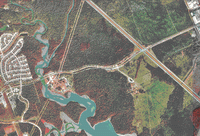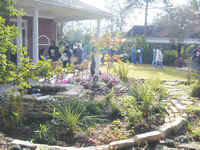Water Quality and Land Use:
The Inescapable Connection
Land use changes water quality. And usually it is for the worst. Imperviousness is perhaps the most powerful measure of our impact on the land. Water quality degrades in direct proportion to the amount of land we pave over or otherwise develop. Poorly planned urban development results in an excess of impervious surfaces, where runoff water quality has little chance to be filtered.Decreasing imperviousness is one of the most important things we can do to maintain and improve water quality associated with urban runoff.
The Water Quality/Land Use Toolbox
 Land Preservation
Land Preservation
Large areas of undeveloped land are the most important investment we can make for future water quality. No amount of water quality improvement practices can equal the water quality benefits of a healthy coastal prairie or a thriving flatwoods, for example. Here you can find tools on how to identify land that should be preserved and the means to get the land out of harms way.
 Low Impact Development
Low Impact Development
When we do have to develop land, we can do so in a way that minimizes our impact. Low Impact Development or LID is a design principle that strives to maximize the amount of pervious surfaces and to imitate nature wherever possible.LID might include something as simple as a rain garden (as at left), a compost filter berm, or a constructed wetland. Here you can find an extensive listing of LID best mangement practices (BMPs).
 Smart Growth
Smart Growth
The very best BMP is Better and More Planning! Sprawling development is the biggest threat to water quality. Fortunately for us, urban patterns that enable more land preservation are also better places to live. Some of the newest smart growth might look like some of our oldest cities, such as Charleston, at left. Find here a full suite of resources on urban patterns that improve both quality of life and water quality!
Land Use Publications:
Managing Urban Sprawl: The Effects of Land Use Externalities (2002)
 Texas Community Watershed Partners
Texas Community Watershed Partners 